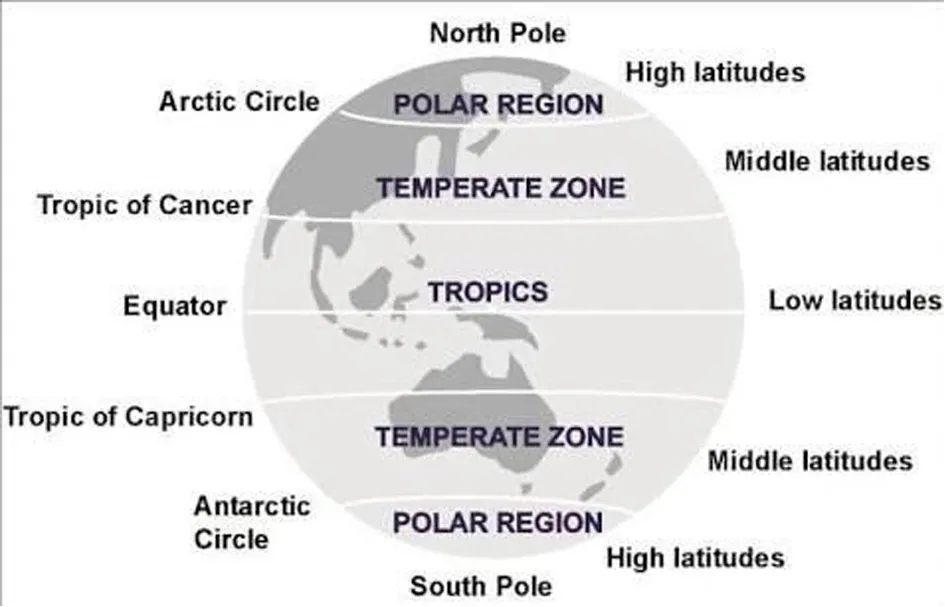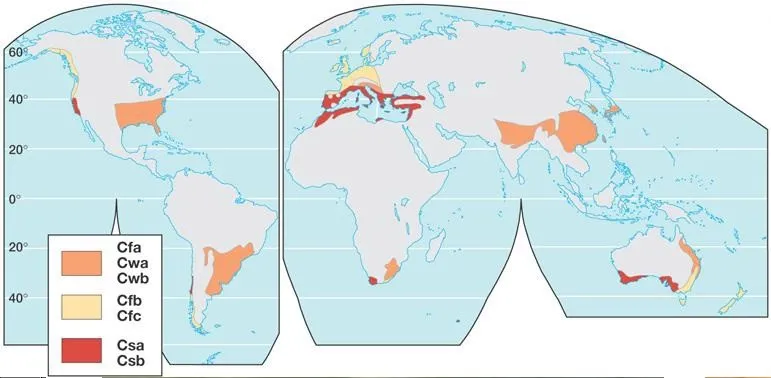If you want to know about the climate and elements of climate or site climate or climatic zones in India, please click the link.
The Köppen climate classification system is a widely used system for classifying the world’s climates. It was developed by the German climatologist Wladimir Köppen in the early 20th century and has been revised several times since then.
- Koppen Climate Classification System is the most widely used system for classifying the world’s climates.
- Its categories are based on the annual and monthly averages of temperature and precipitation.
- The Koppen system recognizes six major climatic types; each type is designated by a capital letter.
- Each category is further sub-divided into sub-categories based on temperature and precipitation.
- There are only 24 sub-categories.

1) Koppen classification of climate
- Broadly divided into 3 categories

3) Koppen climate classification of temperature
Five primary categories of Koppen classification of temperature
- A- Tropical climate (Megatherme Temperature)
- B- Dry Arid climate (xerophyte )
- C- Meso thermal climate- “moderate”
- D- Micro thermal climate
- E- Polar climate (Hekistotherme)
- F- Mountain climate
4) Koppen classification of climate

5) Koppen climate classification of Rain and Vegetation
- f- rainfall throughout year (fully humid)
- m- monsoon
- w- winter dry
- s- summer dry
- W- desert
- S- steppe
- h- hot arid
- k- cold arid
- a- hot summer
- b- warm summer
- c- cool summer
- d- extremely continental

6) A – Tropical climate (Megatherme Temperature)
Essentially, no freezes. winds which change direction according to the seasons

- Tropical Rainy: no dry season
- Annual precip > 80 mm
- No real season
- Sticky, humid air, with little wind
- High sun angle all year
- Tropical Wet-and-Dry: short dry season
- Savanna: alternating 3 month wet and dry periods .
- Monsoon: 5 – 7 month wet and dry regime
- Both have 40 – 80 mm precip/year and average temps above 17°c every month
- Tropical Monsoon: long dry season


7) B – Dry Arid climate (xerophyte)

Arid and Semi-arid climate
- BW (Desert):
- Abundant sunshine
- Hot desert: Sahara
- Cold desert: Gobi
- BS (Steppe):
- Dry short grass regions surrounding deserts
- There are cold and hot steppes
- Hot steppes are subtropical: South Texas
- Cold steppes are at mid latitudes: Montana

8) C – Meso thermal – “moderate”
It has a moderate amount of heat, with winters not cold enough to sustain snow cover. Summers are warm within oceanic climate.

- Mediterranean: dry summer
- Wet-and-dry: dry winter
- Humid: no dry season


9) D – Micro thermal – “low”/ Continental

Extremely rare due to the smaller land masses in the middle latitudes. Essentially, where snow remains on the ground for part of the winter.
- Wet-and-dry: dry winter
- Brutal winters
- Coniferous forests
- Not much precip 10 – 20MM
- Northern Hemisphere only
- Most of Canada, Russia
- Humid: no dry season
- Cold winters and warm summers
- Precip in every month :Northern U.S.
- Humid Continental (cool summers):Southern canada

10) E – Polar climate (Hekistotherme)
The warmest temperature of any month is below 10 °C. Polar climates are further divided into two types:

- Tundra climates
- Tundra is treeless
- Occasionally temperatures will rise above freezing
- Icecap climates
- Complex climates because of altitude
- Can be a little of everything depending on the elevation


11) Koppen classification in India

The Köppen climate classification system is widely used in the fields of climatology, geography, and ecology. It is a useful tool for understanding the world’s climate patterns and how they impact ecosystems, human societies, and other aspects of the natural world.